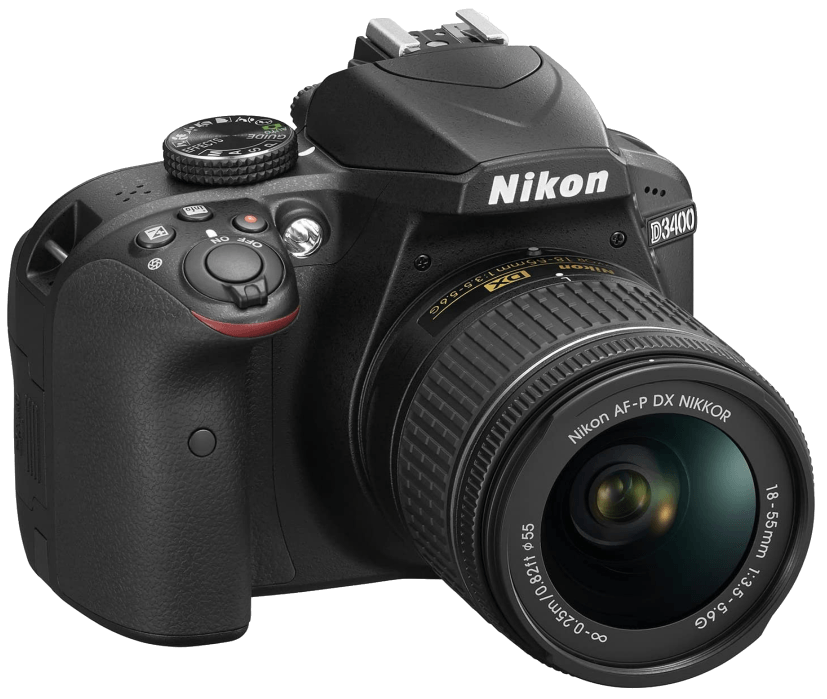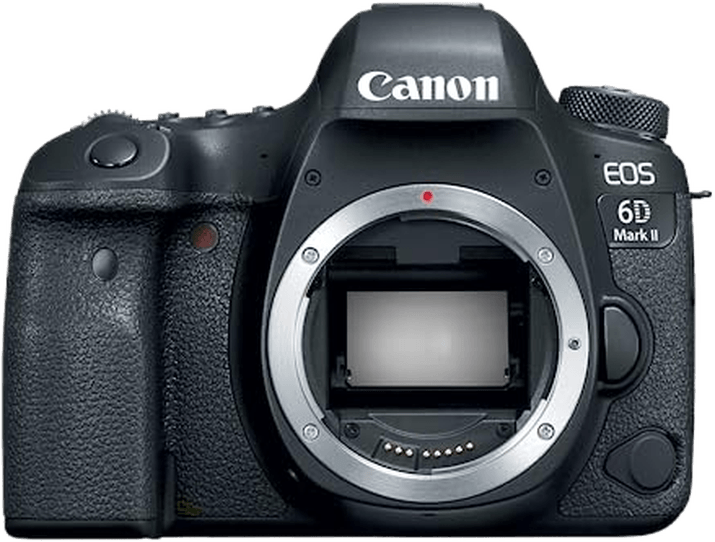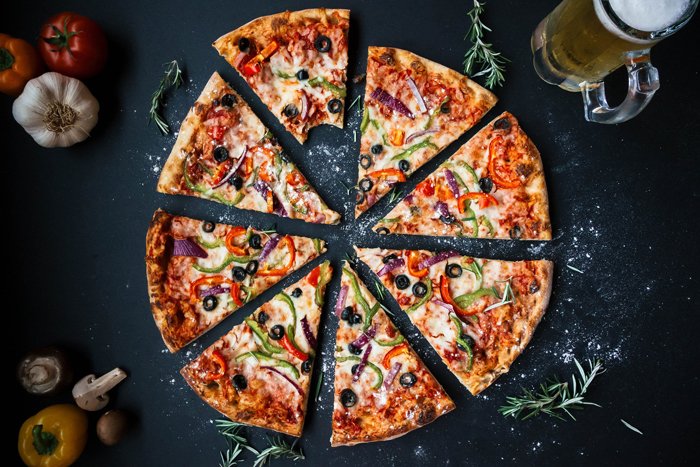Finding the best camera for food photography might be difficult if you’re new to taking food photos. But if you are looking for the best, you’ve come to the right place. As a food and still life photographer, you won’t need many bells and whistles that modern cameras offer.
Having said that, many of our suggestions also serve well in a whole range of photographic settings. After all, not many of us have the luxury of specializing in just one type of photography. Our top pick for food photography is the Fujifilm XT-5. It combines a light, compact body with outstanding autofocus.
What Is the Best Camera for Food Photography?
Before we look at our choices in detail, here is a summary of our picks.
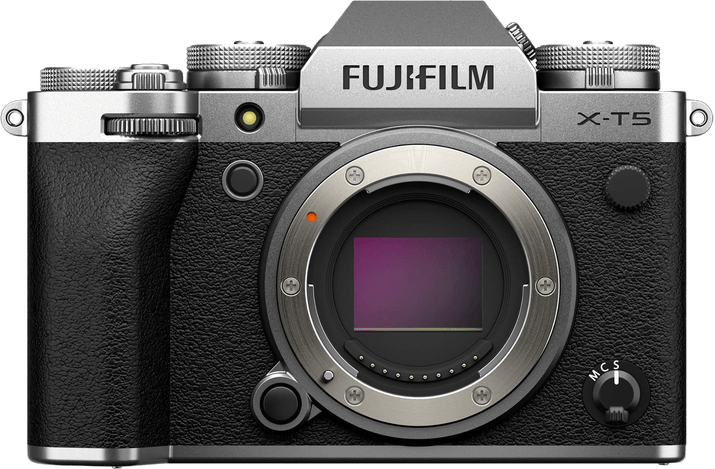
- Compact yet stylish body with classic retro design
- 40.2 MP resolution from an APS-C sensor
- Stunning 160 MP images with Pixel Shift Multi-Shot mode
- 6.2K video with incredible color and definition
- ISO expandable down to 64
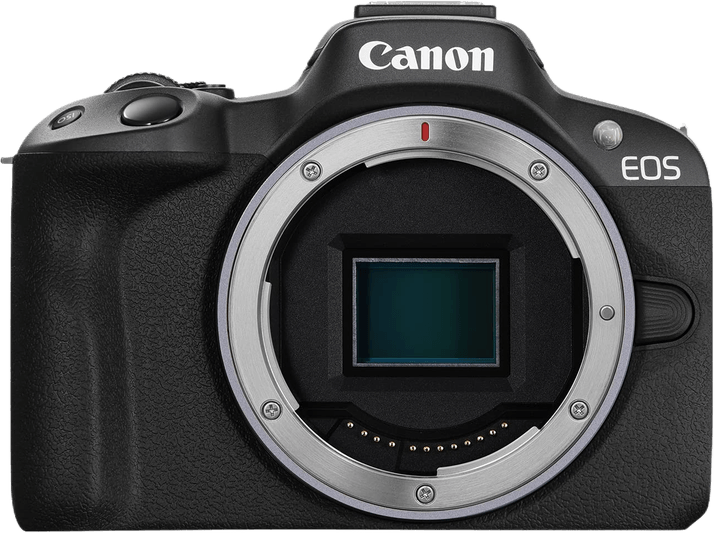
- Compact and easy to use
- 24.2 MP resolution with natural color rendition
- 12 fps burst rate with the mechanical shutter
- 4K video shot at 30 fps
- Articulating touchscreen with vertical mode
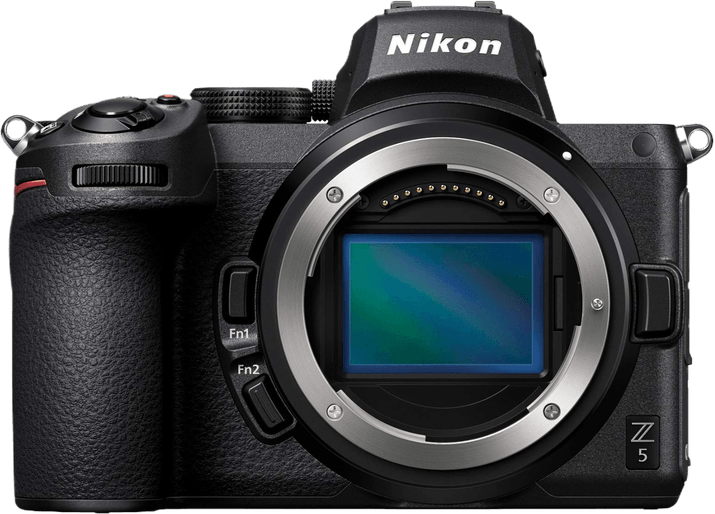
- Compact body with a full-frame sensor
- 24.3 MP resolution with excellent dynamic range
- 4K video at 30 fps and Full HD video at 60 fps
- 5-axis image stabilization
- Built-in creative shooting modes and effects
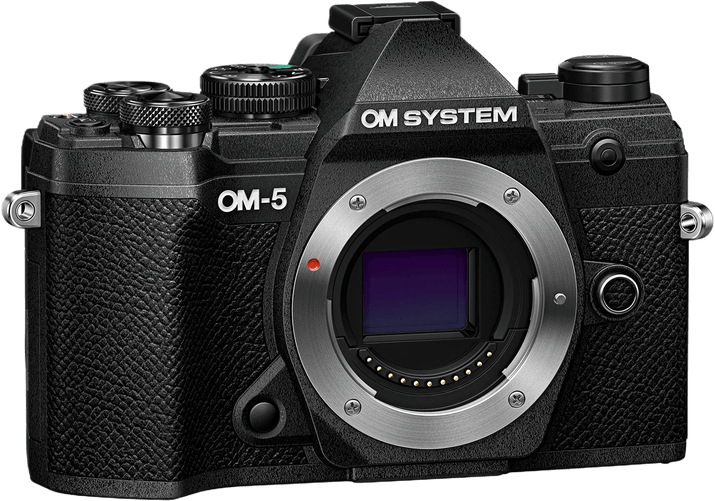
- Compact and lightweight camera body with retro design
- Built-in image stabilization for sharper shots
- Fast and accurate 121-point AF system with focus targeting
- 4K video recording at 30 fps
- HDR mode with no post-production required
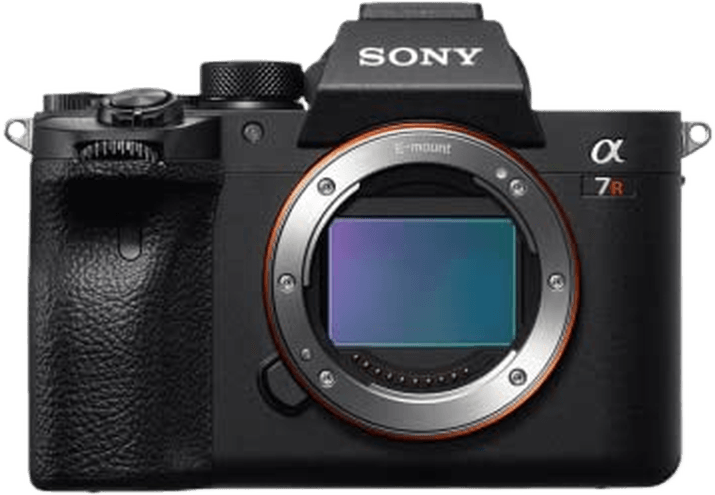
- Incredible 60 MP resolution from the full-frame sensor
- Pixel Shift mode gives you 241 MP images
- Wi-Fi, Bluetooth, and NFC wireless connectivity options
- 10 fps burst with AF support at full resolution
- Low ISO setting of 50
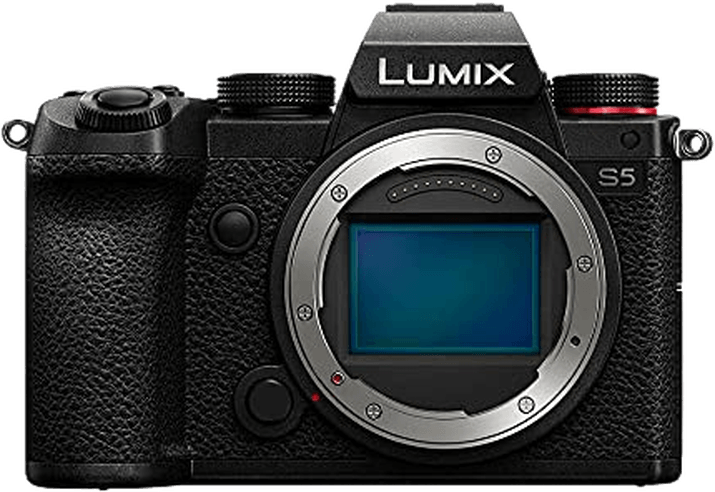
- 96 MP images in High-Resolution mode
- Exquisite 4K at 60 fps with 10-bit color
- 180 fps slow-motion recording with Full HD quality
- Image stabilization provides 6.5 stops of compensation
- 14-plus stops of dynamic range in V-Gamut mode
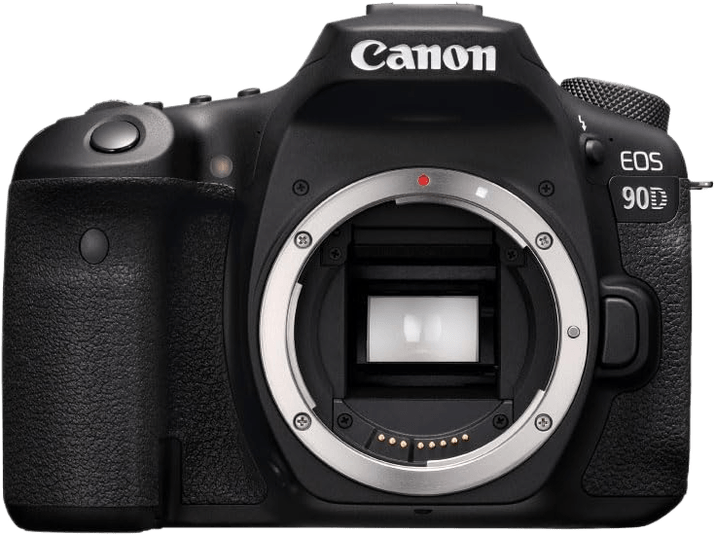
- 32.5 MP resolution from an APS-C sensor
- 45-point cross-type focus system with eye detection
- 10 fps burst with full AF support
- 4K video recording
- Wi-Fi enabled and has webcam functionality
7 Best Cameras for Food Photography
Now, starting with our top pick, let’s look at the cameras we recommend.
1. Fujifilm X-T5

| Brand |
Brand
Fujifilm
|
| Sensor Format |
Sensor Format
|
| Lens Mount |
Lens Mount
Fujifilm X
|
| Megapixels |
Megapixels
40 MP |
| In-body Stabilization |
In-body Stabilization
|
| Autofocus Points |
Autofocus Points
425 |
| Minimum ISO (Native) |
Minimum ISO (Native)
125 |
| Maximum ISO (Native) |
Maximum ISO (Native)
12,800 |
| Frame Rate |
Frame Rate
15 fps |
| Video |
Video
|
| Screen Size |
Screen Size
|
The Fujifilm X-T5 is one of the most impressive mirrorless cameras on the market. And it’s also an incredible choice for food photography. The image quality is outstanding. You have advanced features for even better results. And it’s great for video too.
It has an APS-C sensor, so you get a compact camera body. It’s also a stylish retro design, echoing Fujifilm’s analog past.
But despite the smaller sensor size, you get a 40.2 MP resolution. That’s incredible for an APS-C sensor. And the images look sensational. You get sharp details and vibrant yet true-to-life color rendition. It will capture restaurant dishes or food market stalls with wonderful vitality.
The standard low ISO setting is 125, which isn’t bad. But you can expand that to 64 ISO for even better image quality.
And if 40.2 MP isn’t enough, you can take things to another level with the Pixel Shift Multi-Shot mode. The camera takes several exposures and composites them together to create one 160 MP image. You need a tripod to get the best results with this mode. But the images are jaw-dropping.
The 5-axis image stabilization is another useful feature for food photography. It stabilizes the camera, preventing motion blur. This allows you to work in lower light without a tripod and still capture sharp images. It’s great if you’re shooting in moody restaurants or night markets.
With a 15 fps burst rate with the mechanical shutter, you can shoot chefs in action. You also have a 20 fps burst with the electronic shutter, but 15 is sufficient for most food shoots.
The Fujifilm X-T5 is also great for food-related videography. You can record video with a stunning 6.2K resolution with 4:2:2 10-bit color. That’s pro-level video footage. And it has all the necessary ports for external equipment, like microphones and camera screens.
2. Canon EOS R50

| Brand |
Brand
Canon
|
| Sensor Format |
Sensor Format
|
| Lens Mount |
Lens Mount
Canon RF
|
| Megapixels |
Megapixels
24 MP |
| In-body Stabilization |
In-body Stabilization
|
| Autofocus Points |
Autofocus Points
651 |
| Minimum ISO (Native) |
Minimum ISO (Native)
100 |
| Maximum ISO (Native) |
Maximum ISO (Native)
32,000 |
| Frame Rate |
Frame Rate
12 fps |
| Video |
Video
|
| Screen Size |
Screen Size
|
The Canon EOS R50 is compact, easy to use, and delivers fantastic results. That’s why it’s the best food photography camera for beginners.
The R50 has a compact camera body housing an APS-C CMOS sensor. The sensor has a 24.2 MP resolution, which is great for beginners. The detail and colors are excellent and offer perfect clarity. And you’ll see a big improvement from smartphone cameras.
Although it’s a beginner’s camera, you can still shoot RAW. The file sizes are bigger than JPEG images. But RAW files give you more options if you want to edit your images using photo editing software.
You can use the 12 fps burst mode to capture the hustle and bustle of a hectic food market. That’s with the mechanical shutter. But you can also use the electronic shutter if you need the faster 15 fps burst mode.
With 4K video recording, it’s a great camera for food vloggers. It shoots at 30 fps, so you get smooth footage that looks great on social media or YouTube. You can also shoot 120 fps slow-motion footage in Full HD quality.
The fully articulating screen is helpful for shooting at different angles, especially with video. And there’s a vertical mode, which helps you create optimized content for social media platforms like Instagram.
The Canon EOS R50 has an excellent range of semi-automatic modes. These help you learn and master the best food photography settings. That’s why it’s the best beginner’s camera for food photography.
3. Nikon Z5

| Brand |
Brand
Nikon
|
| Sensor Format |
Sensor Format
|
| Lens Mount |
Lens Mount
Nikon Z
|
| Megapixels |
Megapixels
24 MP |
| In-body Stabilization |
In-body Stabilization
|
| Autofocus Points |
Autofocus Points
273 |
| Minimum ISO (Native) |
Minimum ISO (Native)
100 |
| Maximum ISO (Native) |
Maximum ISO (Native)
51,200 |
| Frame Rate |
Frame Rate
4.5 fps |
| Video |
Video
|
| Screen Size |
Screen Size
|
The Nikon Z5 is a brilliant full-frame mirrorless camera. It’s one of the most compact full-frame cameras on the market. But it’s still packed with excellent features that food photographers will love.
The full-frame sensor gives you a 24.3 MP resolution. That might not sound spectacular for a full-frame model. But the image quality is sharp and vibrant. And the larger pixel size gives you a better dynamic range, which is great for photographing food in different environments.
Thanks to the built-in image stabilization, you can work without a tripod more often. It gives you 5-axis stabilization, allowing you to shoot from hand in low-light situations. That means you don’t need as much equipment in your camera backpack.
Food videographers will like the 4K video recording. The max frame rate for 4K is 30 fps, which is smooth enough for most. But you can switch to Full HD resolution for a faster 60 fps frame rate. That’s great for recording chefs chopping or stir-frying.
The Nikon Z5 has creative features built in. There are modes for focus-shift and time-lapse photography. And you can apply creative filters in-camera. That saves you time in post-processing. You can send your images directly to social media. And even that’s easy, thanks to the camera’s Wi-Fi connectivity.
4. Olympus OM System OM-5

| Brand |
Brand
Olympus
|
| Sensor Format |
Sensor Format
|
| Lens Mount |
Lens Mount
Micro 4/3
|
| Megapixels |
Megapixels
20 MP |
| In-body Stabilization |
In-body Stabilization
|
| Autofocus Points |
Autofocus Points
121 |
| Minimum ISO (Native) |
Minimum ISO (Native)
200 |
| Maximum ISO (Native) |
Maximum ISO (Native)
25,600 |
| Frame Rate |
Frame Rate
30 fps |
| Video |
Video
|
| Screen Size |
Screen Size
|
The Olympus OM System OM-5 is an incredible camera for food photography. It’s super small and compact. But it’s bursting with advanced features for photography and videography.
As a Micro Four Thirds (MFT) camera, the OM-5 is very compact and lightweight. It also has a trendy retro-style body design, which is all the rage right now.
Although small, the MFT sensor gives you a 20 MP resolution. That might not be groundbreaking, but it’s a big jump from smartphone camera quality.
You also have a High Dynamic Range (HDR) mode built-in. The camera can composite three to seven images, all with different exposure settings. It creates the HDR image in-camera, so you don’t need editing software.
Shooting in low light isn’t a problem, thanks to the image stabilization system. You can shoot with slower shutter speeds and lower ISO settings without the risk of blurry images. That means you can work more often without a tripod.
The autofocus system is incredible for a camera of this size. It uses a 121-point phase detection system. And it gives you accurate focus even with moving subjects. You can also use the Focus Targeting modes for better results in specific situations.
The Olympus OM System OM-5 also has excellent video features. You can record 4K footage at 30 fps. You can record vertical videos for social media. And the body has ports for microphones and other accessories. It’s one of the best Olympus cameras. And it’s a great choice for food photographers.
5. Sony a7R IV

| Brand |
Brand
Sony
|
| Sensor Format |
Sensor Format
|
| Lens Mount |
Lens Mount
Sony FE
|
| Megapixels |
Megapixels
61.2 MP |
| In-body Stabilization |
In-body Stabilization
|
| Autofocus Points |
Autofocus Points
425 |
| Minimum ISO (Native) |
Minimum ISO (Native)
100 |
| Maximum ISO (Native) |
Maximum ISO (Native)
32,000 |
| Frame Rate |
Frame Rate
10 fps |
| Video |
Video
|
| Screen Size |
Screen Size
|
The Sony a7R IV offers astonishing specifications for a full-frame mirrorless camera. It has a 60 MP sensor with full-frame autofocus. And if that’s not enough detail for your billboard-sized food pics, it has a Pixel Shift mode for tripod shooting. This bumps the pixel count up to 241 MP.
You can enhance picture quality further by expanding the ISO range. When expanded, you can set the camera to 50 ISO. As you can imagine, 50 ISO and 60 MP give you jaw-dropping images.
It is also superbly equipped for connectivity with up to 5 GHz Wi-Fi, Bluetooth, NFC, and FTP for file transfer. And two card slots boost its pro credentials, as does the optional battery grip.
The a7R IV is an impressive camera all around. Its excellent high ISO performance is another great feature for food photography.
Sony has now released the Sony a7R V. They have improved some specifications. But we think the a7R IV still deserves its place on this list. The newer version is also more expensive, so the a7R IV offers better value for money.
6. Panasonic Lumix S5

| Brand |
Brand
Panasonic
|
| Sensor Format |
Sensor Format
|
| Lens Mount |
Lens Mount
Leica L
|
| Megapixels |
Megapixels
24.2 MP |
| In-body Stabilization |
In-body Stabilization
|
| Autofocus Points |
Autofocus Points
225 |
| Minimum ISO (Native) |
Minimum ISO (Native)
100 |
| Maximum ISO (Native) |
Maximum ISO (Native)
51,200 |
| Frame Rate |
Frame Rate
7 fps |
| Video |
Video
|
| Screen Size |
Screen Size
|
The Panasonic Lumix S5 is ideal for photographing food. It’s lightweight and robust. And it’s one of the best low-light cameras on the market.
The 24.2 MP image resolution is perfectly respectable. But the Lumix S5 has a killer spec combination. It has a solid ISO range, advanced autofocus, and reliable image stabilization.
The top ISO setting is 51,200. And noise becomes a problem as you near the limit. But you can still capture usable images throughout the ISO range. You also get V-Gamut mode for a 14-plus stop dynamic range.
The AF system has head, face, and eye detection, making your life much easier. And the 5-axis in-body stabilization system is second to none in this price range. It gives you an extra 6.5 stops to play with, allowing slower shutter speeds. This is perfect for low-light shooting.
The Lumix S5 also has great video capture and burst mode. If you’re a videographer or vlogger lacking light, it’s one of the best cameras for low-light shooting.
7. Canon EOS 90D

| Brand |
Brand
Canon
|
| Sensor Format |
Sensor Format
|
| Lens Mount |
Lens Mount
Canon EF/EF-S
|
| Megapixels |
Megapixels
33 MP |
| In-body Stabilization |
In-body Stabilization
|
| Autofocus Points |
Autofocus Points
45 |
| Minimum ISO (Native) |
Minimum ISO (Native)
100 |
| Maximum ISO (Native) |
Maximum ISO (Native)
25,600 |
| Frame Rate |
Frame Rate
10 fps |
| Video |
Video
|
| Screen Size |
Screen Size
|
The Canon EOS 90D remains one of the best APS-C cameras there is. DSLRs might be on the way out soon. But the 90D still competes with its mirrorless counterparts. It has excellent features, and it delivers results food photographers will appreciate.
The APS-C sensor has an impressive 32.5 MP resolution. Not many crop-sensor cameras have that kind of power. You can shoot with a 100 ISO setting. And the DIGIC 8 processor helps produce top results shot after shot.
With a 45-point cross-type AF system, you get excellent focusing for food photography. And the eye-detection AF features helps you shoot human subjects, whether that’s chefs in the kitchen or bakers in the bakery.
You also get a handy 10 fps burst mode, which is quick for a DSLR. The burst also gets full support from the autofocus, so you can snap sharp action shots.
It’s also one of the best DSLR cameras for video. You can use it for high-quality 4K video recording. And you can shoot 120 fps for slow-motion vids in Full HD.
The Canon EOS 90D is a well-rounded machine you can use for food photography and many other styles. The Wi-Fi connectivity and rotating screen are two more handy features. We haven’t covered everything great about this camera. But it’s well worth looking into if you want a reliable, high-performance APS-C camera.
What to Consider When Buying a Camera for Food Photography
1. Sensor Size
Sensor size is the first thing to consider when you’re on the hunt for a new camera. Will you buy a camera with a cropped sensor, or will you invest in a full-frame sensor?
Your budget might be the biggest factor in determining your choice. Another factor might be if you’re shooting for a professional agency. Many agencies won’t consider any photo shot without a full-frame camera. So it’s best to do your research.
A cropped sensor is cheaper for the manufacturer to make. This makes good digital cameras available to various consumers at every price point. These are often referred to as “prosumer” cameras.
You can take great pictures with a crop-sensor device. The issue is that your camera and lenses will behave differently with a cropped sensor than with a full frame.
A full-frame camera matches a traditional film camera’s 35mm cropped standard. It has a sensor size of 24 x 36mm. A cropped sensor is smaller than this. It doesn’t match most lenses, so the final images look different.
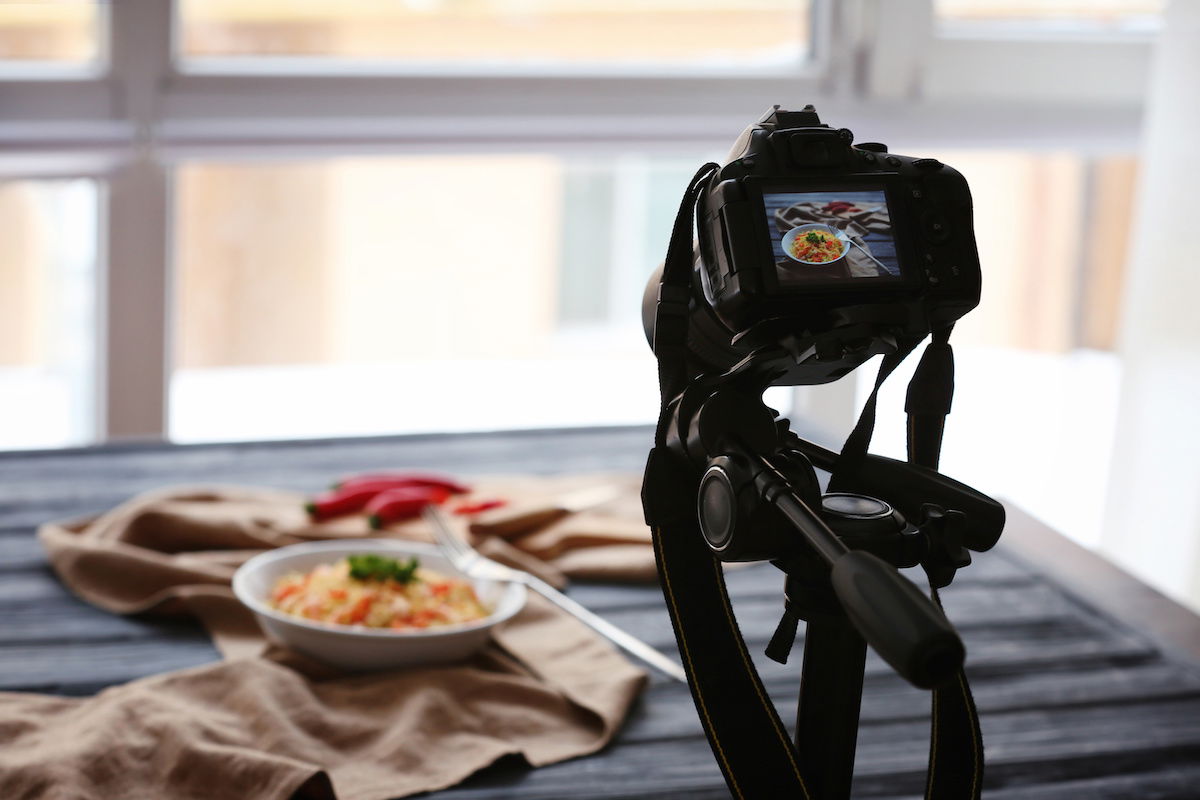
2. Crop Factor
Every camera has a crop factor. This number describes how much the device crops your image compared to the standard 35mm. Most full-frame cameras tend to have a crop factor of 1x. Others, like the Canon 1Dx, come with a 1.3x crop factor.
For example, I started shooting food photos with an APS-C Canon EOS camera with a 1.6x crop factor. This means you multiply the focal length of your lens by 1.6. And it gives you the equivalent focal length it would look like on a full-frame camera.
A 50mm lens works wonderfully to shoot food on a full-frame camera. But on an APS-C Canon Rebel, a 50mm lens behaves more like an 80mm.
Many food bloggers recommend the 50mm as a great all-around food photography lens. But this isn’t necessarily true, especially if you have a crop-sensor camera.
3. File Size and RAW Shooting
These days, most digital cameras produce large file sizes. But file size is something to be aware of if you ever want to print your images.
If you’re a food blogger, you often shoot images for the web only. But what if you want to publish a cookbook one day or license your food photos through stock agencies? Make sure that your camera can accommodate large file sizes. This usually means at least 3000 pixels on the short side.
Also, be sure that the camera you choose can shoot RAW. Some photographers start shooting JPEGs and then move on to shooting RAW when they feel they have developed their skills. But I urge everyone to start shooting RAW and learn to edit as soon as possible.
RAW files are basically digital negatives. They can withstand endless editing without data loss, unlike a JPEG file. The quality of a JPEG file is downgraded with every edit.
They also pack thousands of times more information and color luminance. This gives you endless freedom in how you approach your post-processing. Unless food photography is strictly a hobby, ensure that the camera you choose can shoot RAW files.
4. ISO Level
When you shoot food photography, you should be working on a tripod most of the time. But there will be cases where you need to handhold your camera. Instances would be shooting food photography in a restaurant or on location at a vineyard or a farm.
This is when your ISO becomes very important. It’s best to have a camera that can handle a relatively high noise level. But despite advances in camera technology, using a high ISO does degrade image quality.
If you’re shooting in the scenarios mentioned above, test how far you can push your ISO before the shoot. Post-processing programs like Photoshop or noise-reduction software can reduce noise in an image. But they cannot completely rescue an image of poor quality.
5. Number of Focus Points
This is one of the biggest factors that influenced my decision about which camera to get when making new purchases for food photography.
Some photographers focus on using manual mode. I have a less-than-perfect vision, so I must rely on automatic focus. Plus, it’s easy to miss focus completely, even if you’re off just a tad while engaging manual focus.
Let’s say that you have a camera with only nine focus points. The odds are that there will be many times that you can’t get the focus point where you need it. This can be very frustrating.
What Is the Best Lens for Food Photography?
There is a wide variety of lenses you can use for food photography. Some foodies use prime lenses for pristine sharpness. Others use zoom lenses for more versatility. When it comes to prime vs zoom, it’s up to you.
50mm lenses, or nifty-fifties, are good lenses for food photography when you’re starting out. They are versatile, allowing you to shoot wide or closely framed shots. And they usually have a fast maximum aperture. An f/1.8 aperture is good, but something like f/1.4 is great if you want a shallow depth of field.
You can also use telephoto prime lenses. You can try an 80mm lens for a tighter composition. Or you can even use a focal length up to 100 or 110mm. These are often referred to as portrait lenses. But they are great for food photography too.
When it comes to zoom lenses, a 24-70mm is a great lens for food photography. It gives you excellent shot variety. You can use it for wide-angle shots that include a wider section of the scene. Or you can zoom in for accurate, detailed shots.
If you want to learn more about the best lenses for food photography, click the link to see the full in-depth article.
Conclusion: Best Camera for Food Photography
If you want to photograph food professionally and have the budget, buy a full-frame camera. You can even buy a used one from a reputable dealer if you can’t afford to buy a new one.
If you’re new to food photography or shooting for your blog or website, you may want to start with a budget-friendly crop-sensor camera. You can upgrade to full frame as your skills improve and when you decide the direction you want to take your photography in.
And if you’re shooting in-studio, you might want to have two cameras with you in case one of them malfunctions. This is a very real possibility that I’ve seen in the past as a photographer’s assistant. Nothing is worse than having your camera stop working while a whole team of people depends on you to get the job done.
The Fujifilm XT-5 is our top pick for a fantastic camera that ticks all the boxes. It’s affordable, works well in low light, and captures fantastic details. Plus, it’s lightweight for on-the-go jobs and overhead flat-lay shots.
